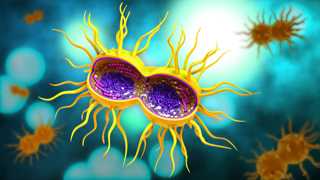2015 STD Surveillance Report
Oct. 19, 2016 – Reported STDs at Unprecedented High in the U.S.
New CDC data for three nationally reported STDs – chlamydia, gonorrhea, and syphilis – combined have reached unprecedented highs, and CDC calls for expanded prevention efforts in light of these increases.
Resources
- Press Release: Reported STDs at Unprecedented High in the U.S.
- Full Report: Sexually Transmitted Disease Surveillance, 2015
- Fact Sheet: Reported STDs in the United States: 2015 National Data for Chlamydia, Gonorrhea, and Syphilis
Graphics: STDs in the United States
The following images and graphics highlight major findings from CDC’s analysis and provide additional context. These high-resolution, public domain images are ready to download and print in your publication. Click on a graphic to see it in high-resolution.
These images are in the public domain and are thus free of any copyright restrictions. As a matter of courtesy, we ask that the content provider be credited and notified of any public or private usage of an image.
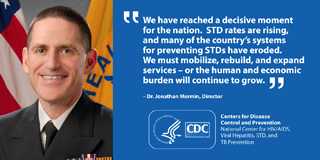 Dr. Jonathan Mermin on the need to mobilize, rebuild, and expand STD services
Dr. Jonathan Mermin on the need to mobilize, rebuild, and expand STD services
View High Resolution Version
“We have reached a decisive moment for the nation. STD rates are rising, and many of the country’s systems for preventing STDs have eroded. We must mobilize, rebuild, and expand services – or the human and economic burden will continue to grow.” – Dr. Jonathan Mermin, Director of CDC’s National Center for HIV/AIDS, Viral Hepatitis, STD, and TB Prevention
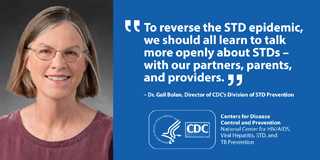 Dr. Gail Bolan on talking more openly about STDs
Dr. Gail Bolan on talking more openly about STDs
View High Resolution Version
“To reverse the STD epidemic, we should all learn to talk more openly about STDs – with our partners, parents, and providers.” – Dr. Gail Bolan, Director of CDC’s Division of STD Prevention
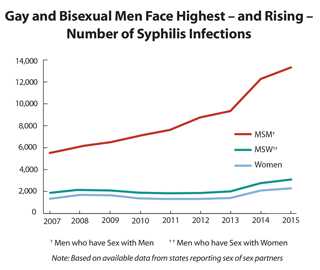 Gay and Bisexual Men Face Highest – and Rising – Number of Syphilis
Gay and Bisexual Men Face Highest – and Rising – Number of Syphilis
View High Resolution Version
Trend data show rates of syphilis are increasing at an alarming rate (19 percent in 2015). Men account for a large majority (90 percent) of all primary and secondary syphilis cases and men who have sex with men (MSM) account for 82 percent of male cases where the sex of the sex partner is known. Primary and secondary syphilis are the most infectious stages of the disease, and if not adequately treated, can lead to visual impairment and stroke.
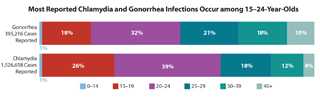 Most Reported Chlamydia and Gonorrhea Infections Occur among 15-24-Year-Olds
Most Reported Chlamydia and Gonorrhea Infections Occur among 15-24-Year-Olds
View High Resolution Version
Americans aged 15-24 account for half of the estimated 20 million new STDs in the U.S. each year. Surveillance data shows both the numbers and rates of reported cases of chlamydia and gonorrhea continues to be highest among young people aged 15-24. In 2015, there were 981,359 reported cases of chlamydial infection among persons aged 15–24 years, representing 64% of all reported chlamydia cases.
Audio
Below are audio clips featuring NCHHSTP Director Jonathan Mermin, MD, MPH and Division of STD Director Gail Bolan, MD. To save the audio clip, right click the audio player and select the “Save audio as…” option.
Dr. Jonathan Mermin on the nation’s decisive moment regarding STDs | View Transcript
Dr. Jonathan Mermin on the nation’s decisive moment regarding STDs
Dr. Jonathan Mermin on reversing the STD epidemics | View Transcript
Dr. Jonathan Mermin on reversing the STD epidemics
Dr. Gail Bolan on the importance of talking openly about STDs | View Transcript
Dr. Gail Bolan on the importance of talking openly about STDs
Dr. Gail Bolan on the devastating consequences of syphilis | View Transcript
Dr. Gail Bolan on the devastating consequences of syphilis
- Page last reviewed: October 19, 2016
- Page last updated: October 19, 2016
- Content source:


 ShareCompartir
ShareCompartir
